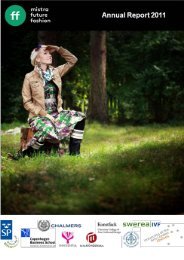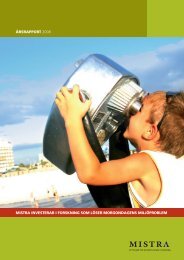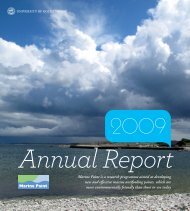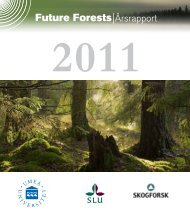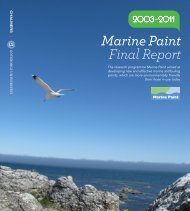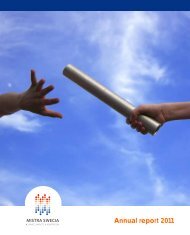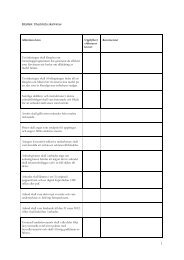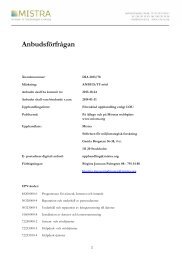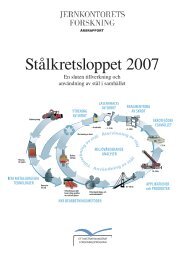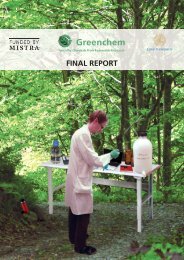The Heureka Research Programme - Mistra
The Heureka Research Programme - Mistra
The Heureka Research Programme - Mistra
You also want an ePaper? Increase the reach of your titles
YUMPU automatically turns print PDFs into web optimized ePapers that Google loves.
Figure 26. <strong>The</strong> spatial layout of habitat patches for Hazel Grouse at the end of the planninghorizon for cases a) without spatial consideration and b) with spatial consideration.Tactical and strategic planningPlanWise offers functionality to generate long-term treatment schedules, inwhich the planning period is divided into five-year time periods. For moreshort-tem planning, five-year periods are too coarse since it is necessary tocontrol the flow of product on a yearly basis. <strong>The</strong>refore, PlanWise now alsooffers functionality to generate short-term schedules, in which a typical planninghorizon is five to ten years, divided into one-year time steps. <strong>The</strong> sameoptimization model system is used for solving tactical optimization problems,PlanWise uses the same data structure in both strategic and tactical cases.From a strategic solution, or plan, the user can choose to start from that planand generate a more detailed tactical plan. Alternatively, the user can let thesystem generate tactical alternatives for each stand that is eligible for harvest(thinning, selection felling, final felling) during the tactical period. Thoseresults can then be used as input for VägRust (see the Operational planningproject) or solved as an optimization problem, probably with an upper boundfor harvested volume guided from a more long-term strategic plan.Fulfillment of objectives<strong>The</strong> original project plan was revised during the course of the project. Oneplanned objective was to develop methods for defining the geographicallocation of reserves. Due to a lack of time this was not possible during theproject time. However, one possibility when evaluating possible locations toreserve is to use the model for clustering old forest areas. Another undertakingfor which we did not reach the goal is undertaking number 6, developmentof the stand-level management model. <strong>The</strong> intention was to developa model allowing a target-oriented approach, i.e. one allowing managementprograms to be generated from goals set by the user and applicable forseparate, single-stand analysis (a primary desire for many users). <strong>The</strong> modelshould be used for separate, single-stand stand analysis, which is indeed aprimary request of many users. Although this goal was not reached, the longtermtreatment schedules, generated by PlanWise, could still be ranked by(for instance) the net present value.Future improvements include the addition of roads as entities in an optimizationmodel. This was a planned objective but was not reached. It willenable the clustering of harvest activities by coordinating harvest activitiesbetween stands that are linked to the same road segment. Another area ofimprovement is to develop robust optimization models that always result infeasible solutions. One problem with e.g. the ARM model described, is thata problem may be infeasible and only an advanced user may be able to finda workaround. A solution to this problem is to develop models that are formulatedin such a way that solutions will always be found. One step in this87



